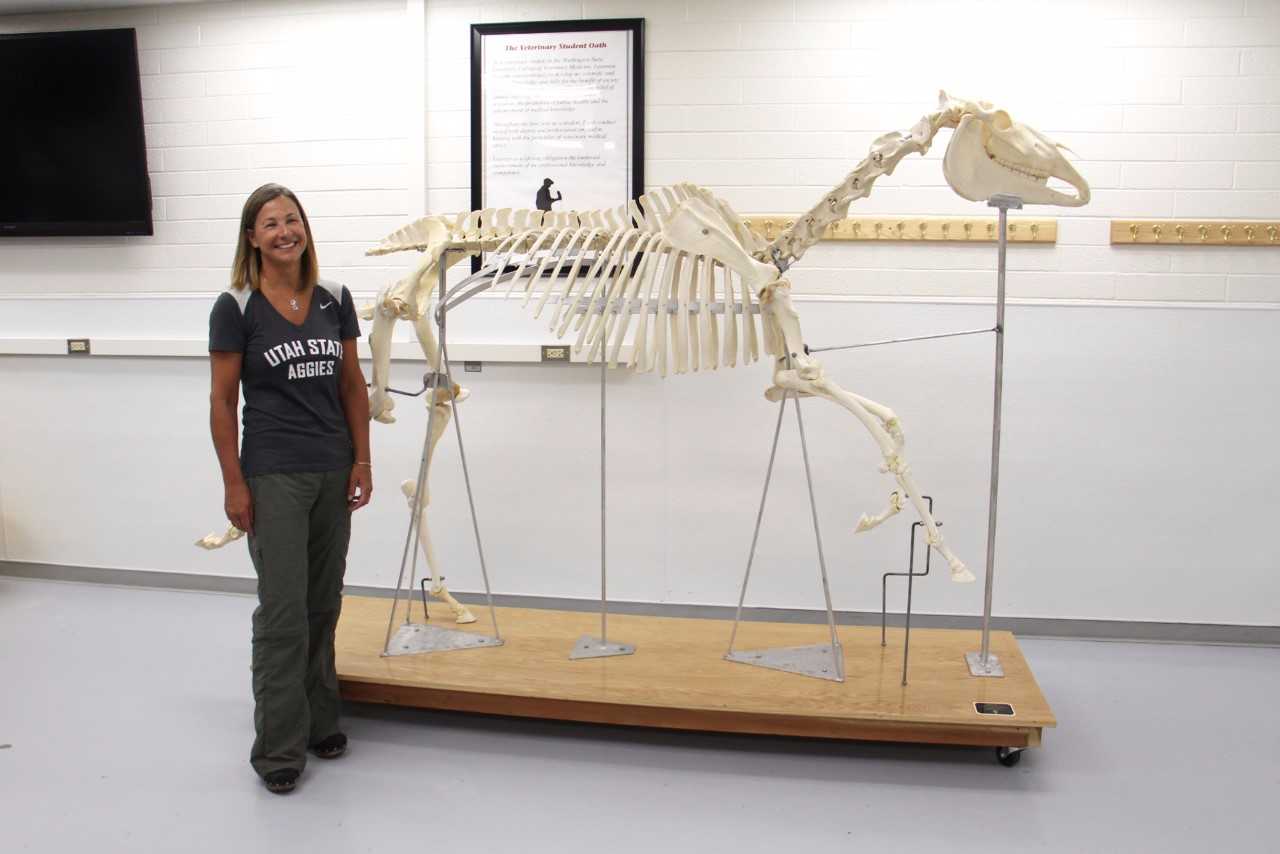
A fully articulated horse skeleton is on display in the Veterinary Science and Biology Building at Utah State University, the product of more than a year of work by Briedi Gillespie, a professional practice associate professor in the School of Veterinary Medicine, and a number of students.
“It was a very involved process,” Gillespie said. “But the idea was to build it solidly so that we can have it for many, many years to come.”
To begin assembling the skeleton, Gillespie collaborated with students enrolled in the skeletal prep class.
“Through the skeletal prep class, we got the bones ready for articulation,” Gillespie said. “Last summer, I coordinated with the welder who helped get the process going and helped get the frame made.”
After the skeletal prep work was completed, the skeleton was assembled in Blackfoot, Idaho. When on the base, the skeleton stands over 6 and a half feet tall and is over 9 feet long. Because of its size, the only option for transporting it was a stock trailer.
The skeleton is from a horse in USU’s teaching program that passed away due to old age. At the farm, the horse, a dun mare named Duals, was instrumental in helping students increase their knowledge and horsemanship skills. Now, she will continue to be apart of the program as she helps students learn about veterinary medicine and caring for horses and other large animals.
Gillespie said that working with USU South Farm staff to acquire the skeleton was a great opportunity because it allowed the entire process to be completed at the university.
“It’s nice that we were able to do all of it here rather than buy a horse skeleton from somewhere else,” Gillespie said. “The horse was part of the program at South Farm. With the vet school being quite new here, it will be neat that she will be able to be a part of this program from the very beginning.”
The skeleton will be used to supplement teaching in various classes such as the gross anatomy course. Gillespie said the skeleton will benefit students by helping them further understand how the structure in a large animal works.
“For veterinary students, it is hard with a large animal to just look at a limb or head or ribs and get an idea for how all of the structures interact with each other,” Gillespie said. “In lab we study limbs, but they are from ponies, donkeys or miniature horses. Students often don’t get perspective on how large a limb actually is in a full size horse.”
Dirk Vanderwall, associate dean of USU’s School of Veterinary Medicine, agreed the skeleton will greatly benefit the teaching program.
“When I first heard that Dr. Gillespie would be preparing the full sized horse skeleton, I was excited because it will be a great addition to our teaching program for both our undergraduate and graduate students,” Vanderwall said. “When we do horse Extension activities, it will also have a use in that realm as well.”
July 5, 2017
Writer: Aubree Thomas, Aubree.Thomas@usu.edu
Contact: Briedi Gillespie, Briedi.Gillespie@usu.edu

